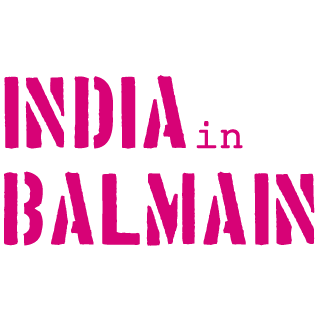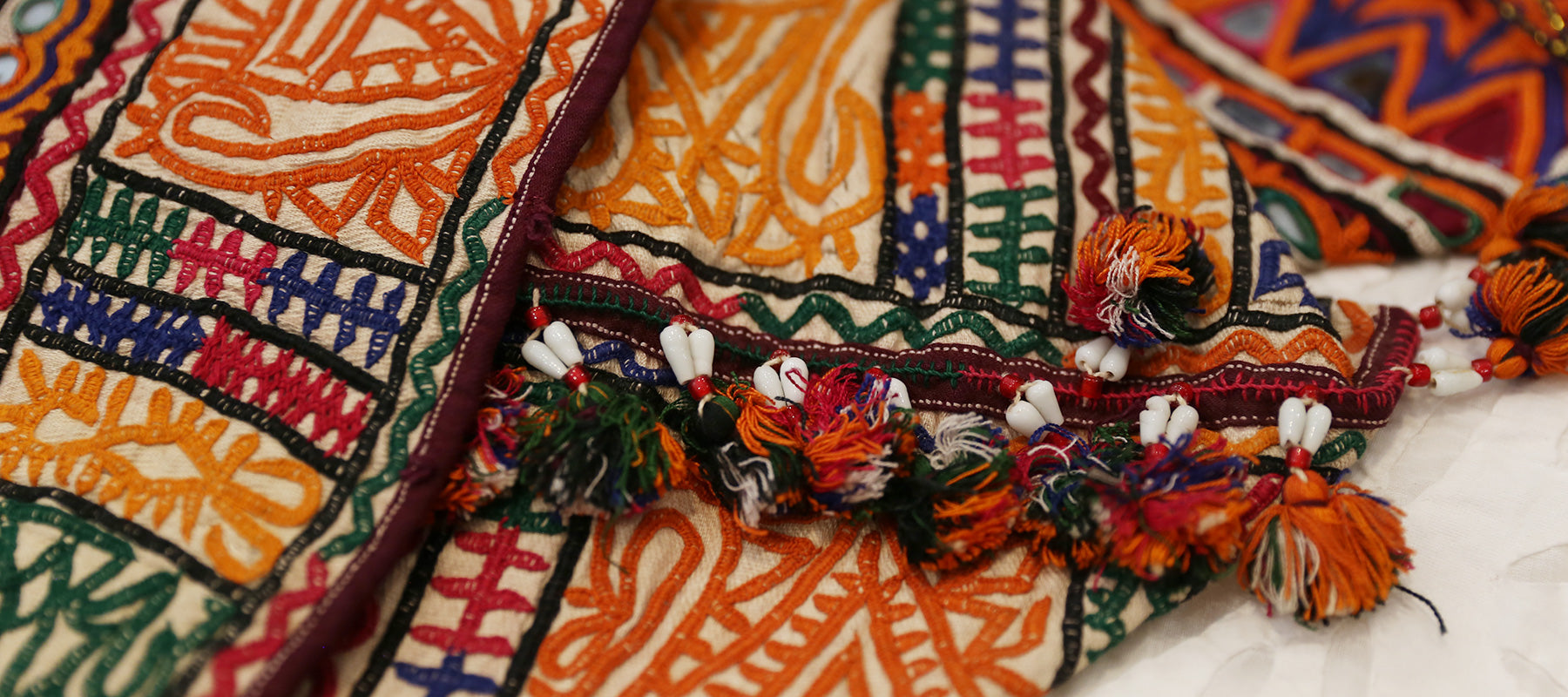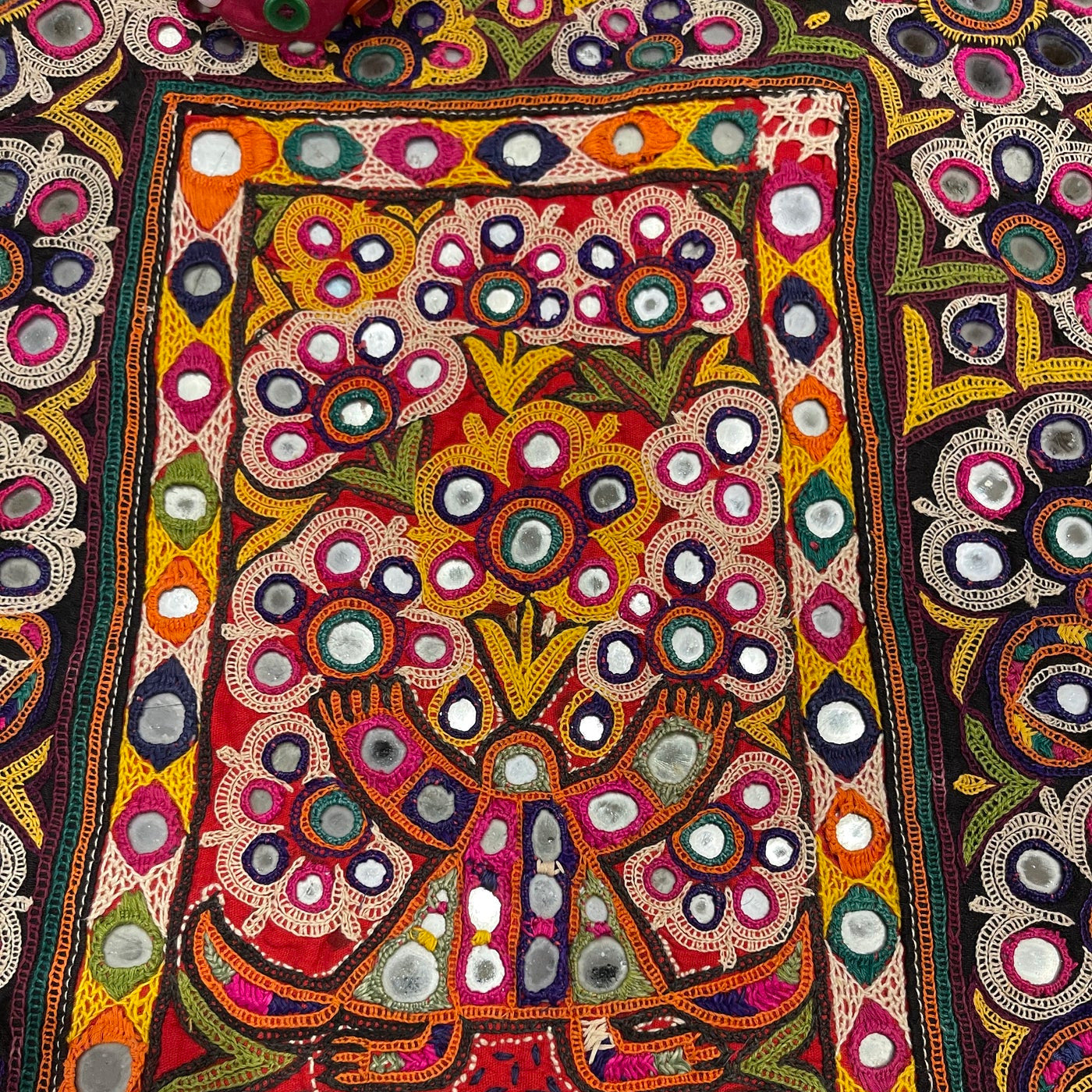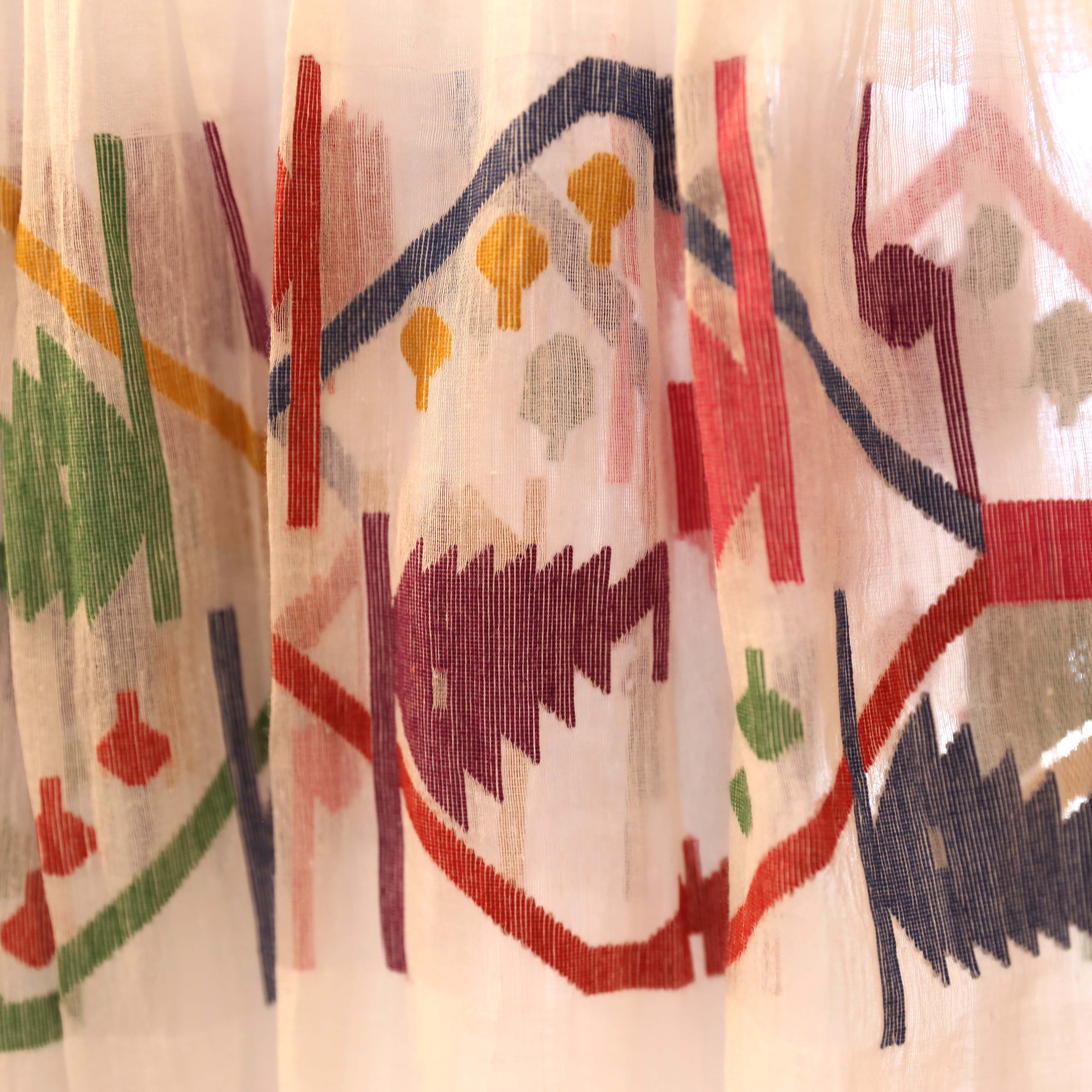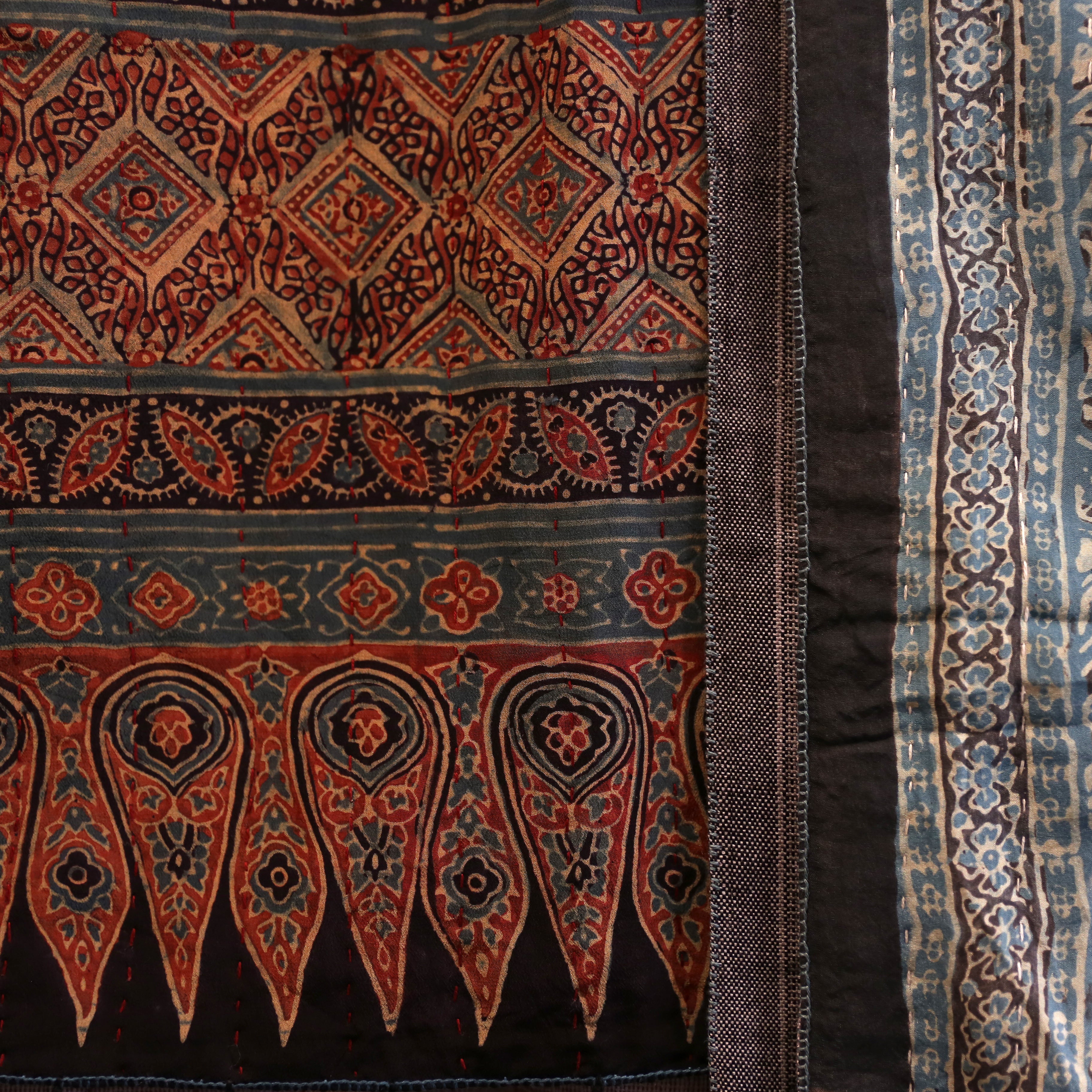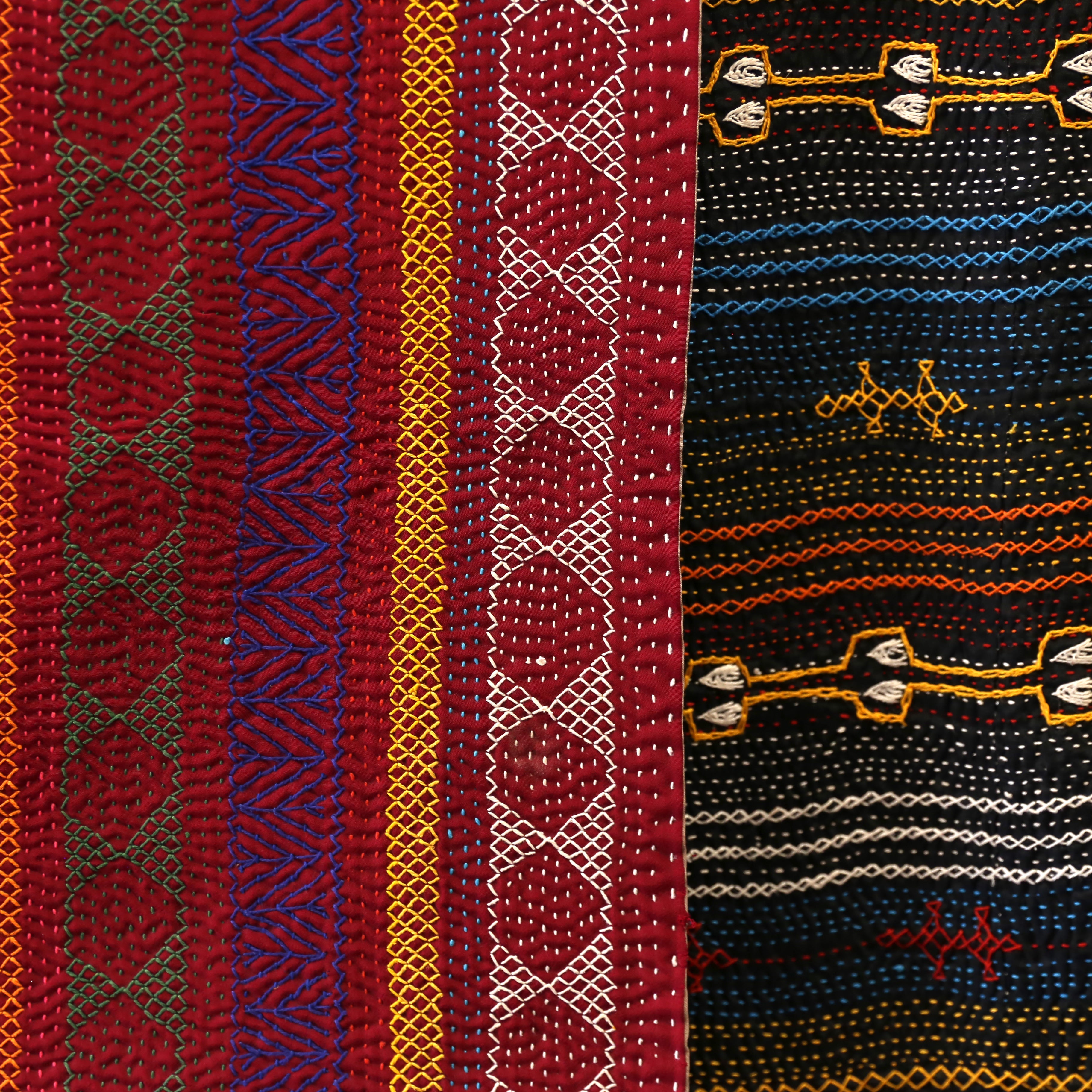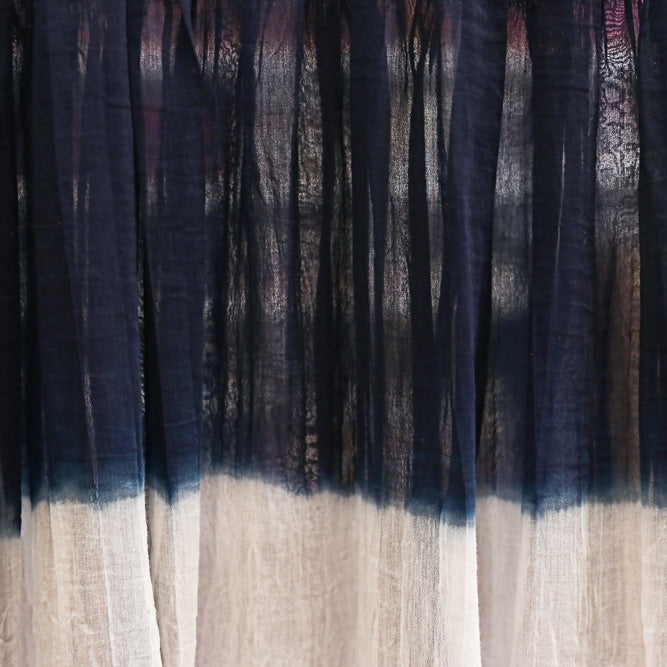ETHNIC EMBROIDERY STYLES
Ethnic styles express lifestyle. They are practiced by pastoralists whose heritage is rooted in community rather than land, and considered cultural property.
AHIR
Ahir embroidery is mostly bold and their motifs are geometric shapes, floral patterns, animals and birds. Their embroidery also has Krishna motifs. Their style predominantly has an outline called Sankdi around the mirrors with filling stiches called Vano. Characteristically, Ahir embroidery has round mirrors.
Yadavas are known as Ahirs in Gujarat. Legend goes that, of the followers of Lord Krishna who left with him from Mathura for Saurashtra, some Ahirs settled down in the Vagad region of Kutch. Traditionally, Ahirs have been cattle herders and a few are shepherds. This is one of the most commercialised embroidery styles of Kutch.
RABARI
Rabari embroidery is unique to the nomadic Rabaris who migrated into Kutch from the Thar Desert of Rajasthan. Rabari are expert camel breeders, cattle herders and shepherds.
Essential to Rabari embroidery is the use of mirrors in a variety of shapes; squares, triangles, diamonds, rectangles and circles. This unusual play with shaped mirrors is unique to Rabari embroidery. Patterns are outlined in chain stitch, then decorated with a regular sequence of mirrors and accent stitches, in a regular sequence of colours.
Rabaris also use decorative back stitching, called bakhiya, to decorate the seams of women's blouses and men's kediya or jackets. The style, like Rabaris, is ever evolving, and in abstract motifs Rabari women depict their changing world. Contemporary bold mirrored stitching nearly replaced a repertoire of delicate stitches.
Rabari are Hindu and are devout worshipers of the mother goddesses. Many Rabari still celebrate all marriages on only one day, the birthday of Lord Krishna. The marriages take place after the monsoon rains and signal the end of their annual wanderings.
Embroidery is an integral part of Rabari life. They consider the choli (blouse) one of their most important art forms because of its heavily embroidered front.
JATS
Five hundred years ago the Jats resided in the Halab region of present-day Baluchistan. They were known by the name Dhanetah Jats, which means herder. Under territorial pressure from feudal landowners and in search of new grazing lands, they began an exodus that would take them to Sindh, Gujarat, and eventually Kutch. Those who took up farming became known as Gracia Jats. Some, known as Fakirani Jats, became holy men devoted to studying the Qur'an. The largest group remained herders and retained the name Dhanetah. All Jats are Sunni Muslims and never marry outside of their community.
Jat women design and produce exquisite, labour-intensive embroidery. The power of Jat embroidery comes largely from the closely stitched patterns that completely cover the cloth. They take pride in the fact that their "stitches outlive the cloth on which they’re sewn." The most intensively embroidered article of a Jat woman's dowry is the "churi" or blouse. Its colour and motifs visually communicate the age, marital status and geographical origin of the wearer.
The Jats were pressured by the government to settle and found themselves on the least fertile land. They began selling their embroidery only fifteen years ago in order to survive droughts.
MEGHWAR
Despite the later division of the Thar region through the creation of political boundaries, the crafts of the Thar continue to share a common vocabulary and sensibility, a phenomenon perhaps best exemplified by the embroidery and applique of the Meghwal, an artisan community who practice weaving,l eather tanning and wood work.
The Meghwal migrated from Pakistan to Kutch and Rajasthan; a significant number have settled in the villages of the Bhuj region of Bikaner district. Embroidery forms a key component of their visual culture as it is executed on products that are worn or given during marriage and on dowry objects. Consequently, the embroidery make use of mirrors and is characterized by its refined craftsmanship, dense coverage, rich colors,and elaborated motifs and finished edges.
Meghwal embroidery may be broadly classified as pakko, or solid and permanent, and kacho, or temporary. Pakko is a tight square chain and double buttonhole stitch embroidery, often with black slanted satin stitch outlining. The motifs of paako, sketched in mud with needles, are primarily floral and generally arranged in symmetrical patterns. Kacho embroidery is distinguished by its use of counted thread work techniques such as suf, kharek, kambhiri and mucca.
Suf is a painstaking embroidery based on the triangle, called a "suf." Suf is counted on the warp and weft of the cloth in a surface satin stitch worked from the back. Motifs are never drawn. Each artisan imagines her design, then counts it out --in reverse! Skilled work that requires an understanding of geometry and keen eyesight. A suf artisan displays virtuosity in detailing, filling symmetrical patterns with tiny triangles, and accent stitches. This unique geometric language has been handed down for generations